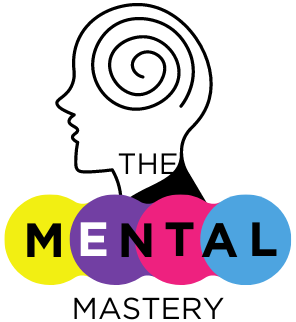Decoding Body Language: A Guide to Recognizing Mental Health Indicators
Introduction
Body language is a powerful nonverbal communication tool that can provide information about a person’s feelings and mental health. People frequently use posture, eye contact, gestures, and facial expressions in addition to words to express their emotions. Knowing these indicators is crucial for mental health practitioners to evaluate their clients’ emotional health and spot symptoms of stress, anxiety, depression, and other mental health issues.
Scientific research has increasingly shown that nonverbal behaviors are deeply linked to psychological states. Mehrabian’s (1972) foundational research on nonverbal communication suggested that up to 93% of communication is nonverbal, emphasizing the importance of body language in understanding human interactions. This highlights the significance of body language in understanding human relationships. Nonverbal clues frequently happen instinctively and offer more accurate insights into a person’s feelings than verbal words, which may be deliberately controlled (Navarro & Karlins, 2008).

The Importance of Body Language in Mental Health
In both social and therapeutic contexts, nonverbal communication is essential. It can offer vital information on mental health issues, particularly in those who have trouble expressing themselves verbally. Body language is a crucial part of interpersonal communication since it may reinforce, contradict, or replace spoken words (Burgoon et al., 2016).
For mental health professionals, understanding nonverbal communication can help in:
- Identifying hidden emotional distress
- Recognizing signs of anxiety, depression, and trauma
- Building stronger therapeutic relationships
- Enhancing communication with clients who have difficulty verbalizing emotions
Key Nonverbal Indicators and Their Psychological Significance
1. Facial Expressions: The Window to Emotions
Facial expressions are among the most universal indicators of emotions. Studies show that microexpressions—brief, involuntary facial expressions—can reveal true emotions even when individuals attempt to conceal them (Ekman, 2009). For example:
- A forced smile with tense facial muscles may indicate hidden sadness or anxiety.
- Furrowed brows and tight lips may signal frustration or distress.
- Avoidance of facial expressions can be associated with emotional detachment or depressive symptoms.
2. Posture and Body Orientation
Posture can reflect confidence, discomfort, or emotional distress. Research by Pease & Pease (2017) highlights that individuals experiencing depression often display slouched shoulders and a downward gaze, while those experiencing anxiety may exhibit restless movements, such as shifting weight from one foot to another. Conversely, an open, upright posture often suggests confidence and emotional stability.
3. Eye Contact: Connection or Avoidance?
Eye contact is a powerful nonverbal cue that conveys emotions, trust, and engagement. Studies suggest that people with anxiety disorders tend to avoid eye contact, while excessive or prolonged eye contact can indicate discomfort or an attempt to assert dominance (Kleinke, 1986). A lack of eye contact, combined with other body language cues, may signal social anxiety, autism spectrum disorder, or depression.
4. Gestures and Hand Movements
Hand movements and gestures can provide insight into an individual’s thought processes. Common gestures associated with mental health include:
- Fidgeting, such as tapping fingers or playing with objects, which may indicate anxiety or nervousness.
- Self-soothing gestures, like rubbing hands or touching the face, often signal stress.
- Crossed arms can indicate defensiveness or discomfort.
5. Proxemics: Personal Space and Boundaries
Proxemics, or the use of personal space, varies across cultures but also reflects psychological states. Individuals experiencing anxiety or trauma may prefer increased personal space, while those with borderline personality traits might engage in boundary violations, standing uncomfortably close to others (Hall, 1966). Observing how a person interacts with space can provide further insights into their emotional well-being.
Cultural Considerations in Interpreting Body Language
When analysing body language, cultural differences must be taken into account. Some Asian and Middle Eastern cultures may view direct eye contact as disrespectful, yet in some Western cultures it is a show of confidence (Matsumoto, 2006). In a similar vein, cultural norms can influence the meaning of physical gestures like handshakes. To prevent misunderstandings, mental health practitioners must approach body language analysis with cultural awareness.
Understanding the Topic: The Role of Nonverbal Communication in Therapy
In therapy, observing nonverbal communication can enhance the therapeutic alliance and provide crucial insights into a client’s emotions. For instance:
- Noticing clenched fists or rapid breathing can prompt therapists to explore underlying anger or anxiety.
- Observing avoidance behaviors, such as looking down or crossing arms, can help therapists recognize discomfort or resistance.
- Tracking changes in body language over multiple sessions can indicate progress or setbacks in a client’s mental health journey.
By integrating body language analysis into therapy, professionals can tailor their approaches to better support their clients and create a more empathetic and effective therapeutic environment.
Conclusion
Decoding body language is a vital skill for mental health professionals, educators, and individuals seeking to understand human emotions more deeply. Understanding nonverbal clues, which include posture, eye contact, facial expressions, gestures, and personal space, can provide important information about someone’s emotional condition. To prevent misunderstandings, it is crucial to take into account the larger context, which includes cultural variations and individual personality factors.
Enhancing our capacity to understand body language can lead to more meaningful encounters, strengthen therapeutic alliances, and establish a more encouraging atmosphere for people dealing with mental health issues. Integrating awareness of nonverbal communication into mental health treatments will continue to be a crucial tool for comprehending and helping those in need as this field of study develops.
References
Burgoon, J. K., Guerrero, L. K., & Floyd, K. (2016). Nonverbal Communication. Routledge.
Ekman, P. (2009). Telling Lies: Clues to Deceit in the Marketplace, Politics, and Marriage. W. W. Norton & Company.
Hall, E. T. (1966). The Hidden Dimension. Doubleday.
Kleinke, C. L. (1986). Gaze and eye contact: A research review. Psychological Bulletin, 100(1), 78–100.
Matsumoto, D. (2006). Culture and nonverbal behavior. In V. Manusov & M. Patterson (Eds.), The SAGE Handbook of Nonverbal Communication (pp. 219–235). SAGE Publications.
Mehrabian, A. (1972). Nonverbal Communication. Aldine-Atherton.
Navarro, J., & Karlins, M. (2008). What Every BODY is Saying: An Ex-FBI Agent’s Guide to Speed-Reading People. HarperCollins.
Pease, A., & Pease, B. (2017). The Definitive Book of Body Language: The Hidden Meaning Behind People’s Gestures and Expressions. Bantam.







